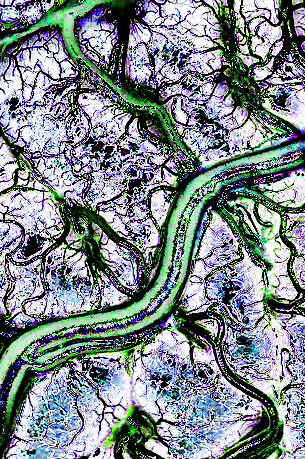Twins help decode brain DNA
 Australian researchers have found strong genetic influences on the structure of the brain.
Australian researchers have found strong genetic influences on the structure of the brain.
UNSW researchers have published findings from a landmark twin study looking at genetic influences on key structures of the brain.
They found a strong genetic contribution to almost all cortical and subcortical brain structures, and identified three clusters of genetically-related structures.
The study is another step on the path to a full genetic blueprint of the human brain, for a better understanding of normal brain development, cognitive functioning and age-related diseases.
The team from UNSW Medicine analysed the MRI scans of 322 individuals from the Older Australian Twins Study, in order to map the heritability of cortical and subcortical structures in their brains.
These structures are responsible for functions including memory, visual processing and even motor control.
Experts already know that genes strongly underpin brain development, but do not understand which specific genes are implicated, or how they contribute to different brain structures.
To identify these genes, it is vital to know whether they are shared by different parts of the brain, or if they are unique to a single structure.
“This is the first attempt to examine genetic correlations between all of the brain’s structures, using the twin design,” says lead researcher Associate Professor Wei Wen.
The team reports the following key findings:
● The data suggest that the volume of cortical and subcortical brain structures have moderate to strong genetic contributions (between 40 and 80 per cent)
● The subcortical hippocampus, which play a key role in memory processes, has a genetic contribution greater than 70 per cent in older people
● Cortical structures, including the frontal lobe (movement, memory and motivation) and occipital lobe (visual processing), have genetic contributions greater than 70 per cent
● There is symmetry in the brain - corresponding structures in the left and right hemispheres were influenced by the same genetic factors;
● There are three genetically correlated clusters within the brain. These are regions where the same sets of genes seem to be influencing multiple structures. One cluster involves the four cortical lobe structures, while the other two involve clusters of subcortical structures.
“The presence of these three genetically correlated clusters is the most significant result, and is where the novelty of the work lies,” says Professor Perminder Sachdev, a neuropsychiatrist.
“It gives us a blueprint for forming a new model of the brain, subdivided into genetically linked structures. This we can apply to the analysis of big data, and use to more effectively hunt for the specific genes involved in brain development.”
In twin studies like this one, if a physical trait is considerably more similar for identical twins than fraternal twins, it suggests a strong genetic contribution.
Despite finding strong genetic contributions across all structures examined, Sachdev says he was surprised by the low genetic correlation between cortical and subcortical structures.
These structures appeared to have unique genetic determinants, and were only weakly related.
“It’s a reminder that the brain is an incredibly complex organ, which cannot be treated as a homogenous structure for genetic purposes,” he says.
“It’s a long way away, but if we can understand the genetic basis for variability in human brains, we can begin to understand the mechanisms that cause these differences, and that also underpin the development of diseases in future.”








 Print
Print